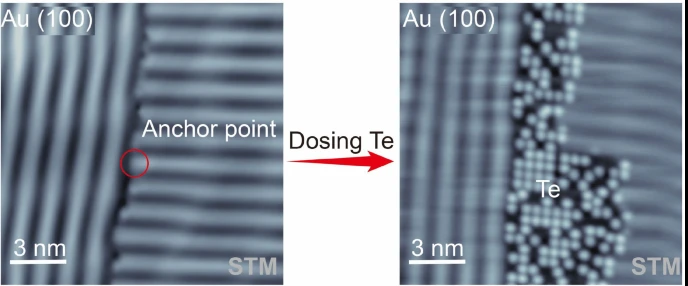Erwen Zhang, Huan Lu, Wei Zhang, Shuiyan Cao, Yang Wang, Rong Rong, Ying Liu, Zhuhua Zhang, Ming Yang, Yanpeng Liu and Wanlin Guo.
Nano Research, (2023)
Abstract:
The Au (100) surface has been a subject of intense studies due to excellent catalytic activities and its model character for surface science. However, the spontaneous surface reconstruction buries active Au (100) plane and limits practical applications, and how to controllably eliminate the surface reconstruction over large scale remains challenging. Here, we experimentally and theoretically demonstrate that simple decoration of the Au (100) surface by tellurium (Te) atoms can uniquely lift its reconstruction over large scale. Scanning tunneling microscopy imaging reveals that the lifting of surface reconstruction preferentially starts from the boundaries of distinct domains and then extends progressively into the domains with the reconstruction rows perpendicular to the boundaries, leaving a Au (100)−(1 × 1) surface behind. The Au (100)−(1 × 1) is saturated at ∼ 84% ± 2% with respect to the whole surface at a Te coverage of 0.16 monolayer. With further increasing the Te coverage to 0.25 monolayer, the Au (100)−(1 × 1) surface becomes reduced and overlapped by a well-ordered (2 × 2)-Te superstructure. No similar behavior is found for Te-decorated Au (111), Cu (111), and Cu (100) surfaces, nor for the decorated Au (100) with other elements. This result may pave the way to design Au-based catalysts and, as an intermediate step, even potentially open a new route to constructing complex transition metal dichalcogenides.
